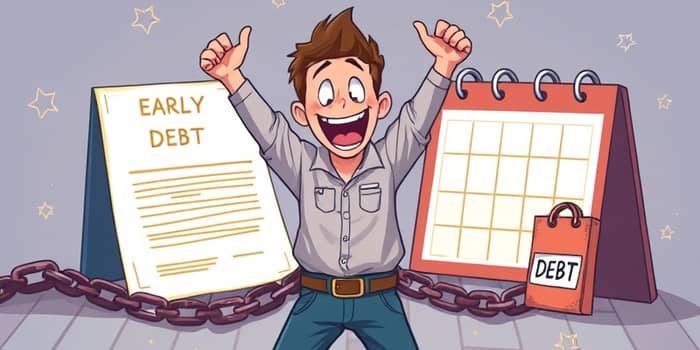
Eliminating debt ahead of schedule can feel like unlocking a door to financial freedom. Yet, an unexpected fee can cast a shadow on that triumph. Understanding how to sidestep these costs empowers you to reap the full rewards of early payoff without fear of extra charges.
A prepayment penalty is a fee imposed by a lender when you pay off a loan before its scheduled maturity date. Lenders use this charge to recover lost interest income they would have earned had the loan run its full term.
While most personal loans do not include these penalties, they can appear in some agreements. Awareness of their existence and structure is the first step toward avoiding unwelcome surprises.
Penalties vary widely based on loan type and lender policies. Consider these illustrative scenarios:
In a personal loan, you might face a flat fee of $500 for any early payoff. In another case, a lender may charge 5% of the outstanding balance, turning a $5,000 balance into a $250 penalty.
Mortgages often feature scaled structures: 3% of the balance in the first year, 2% in the second, and 1% in the third. A $300,000 balance would trigger a $9,000 fee initially, decreasing to $3,000 by year three.
Choosing when to prepay can make all the difference. Penalties are steepest in the early life of a loan and often taper off over time. If you plan to pay off your balance early, consider waiting until the penalty structure has already declined.
Always run the numbers. If the penalty outweighs the interest savings, it may be smarter to continue regular payments and redirect extra funds elsewhere.
Your loan agreement is the definitive source of truth. It must outline any prepayment penalties in clear terms. Lenders are legally required to carefully read your loan documents and disclose fees upfront under consumer protection regulations.
Before signing, ask for a payoff statement. This document calculates exactly what you owe on a given date. Verify that any quoted penalty matches the loan agreement’s terms.
With foresight and preparation, you can often sidestep these fees entirely. Follow these strategies to keep your path to debt freedom smooth and penalty-free.
While prepayment penalties are more common in mortgages and business loans, they can surprise personal borrowers. If you anticipate paying off debt early, prioritize loans with flexible terms.
Remember that penalties are not tax-deductible. Factor any potential fee into your overall borrowing cost analysis to make fully informed decisions.
Empower yourself by maintaining open communication with your lender. A brief conversation today could save you hundreds or thousands of dollars tomorrow.
Finally, approach your debt journey with both ambition and caution. With informed planning and attention to detail, you can eliminate balances early and celebrate financial freedom without penalties weighing you down.
By mastering the landscape of prepayment penalties and leveraging the tips outlined above, you position yourself to move toward a debt-free future swiftly and confidently. Start your path today, and enjoy the true benefit of paying off your personal loan on your own terms.
References













